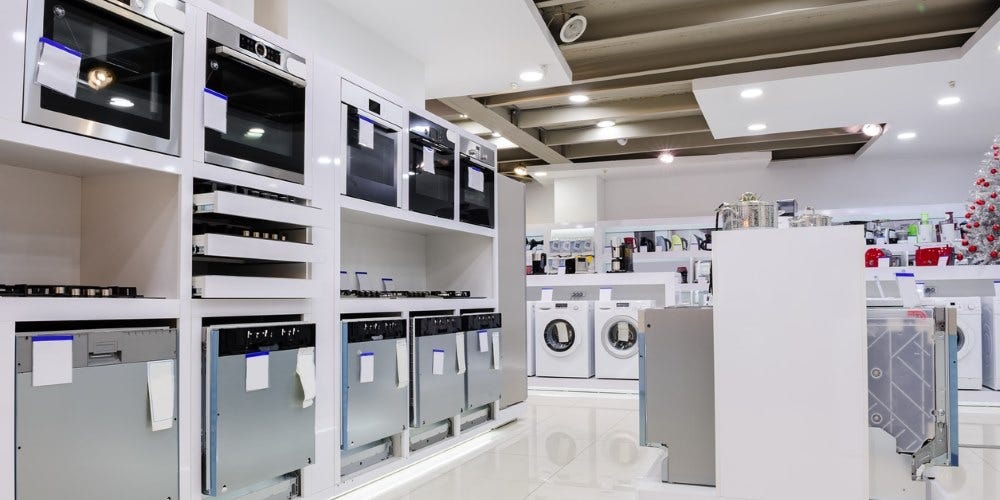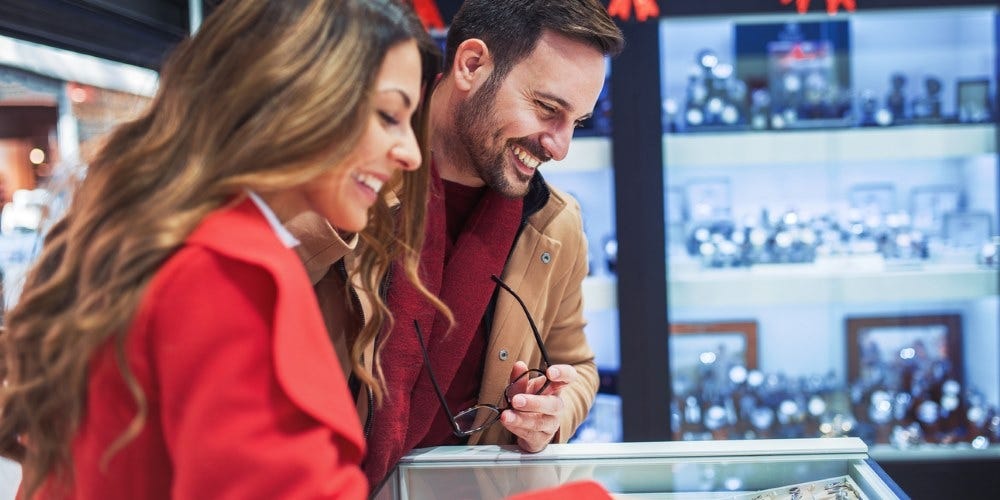The influence of lighting in retail settings
With the rise of online shopping, high-street stores are having to fight even harder to grab the attention of consumers. As well as music, scent and temperature, ambient lighting is important to create for customers the ultimate shopping experience, and one that makes purchasing items in store more desirable than the increasingly popular alternatives.
Rob Holroyd, Digital Marketing Manager at LampShopOnline, says: “Lighting is a powerful influence on a consumer’s shopping habits. It can be used to create an atmosphere, encourage impulse purchases and influence emotions.
“Another perk of visiting shops is being able to inspect products up close, and lighting can take advantage of this by showcasing a product’s features.”
Encourage sales
For more considered purchases within a luxury outlet, customers may want to spend longer browsing and trying on items to fully enjoy the time they spend in the store. Research shows that dimmed lighting creates a sense of relaxation and encourages consumers to shop at their leisure.

However, in busy high-street stores where products are priced at the cheaper end of the scale, the use of high-activity lighting—which provides bright light to an entire area—can encourage customers to think quickly and make impulse purchases. Retail giants such as Primark and H&M demonstrated this within their stores.
A study published in 2018 found that dimmed lighting can influence consumers to let their guard down and buy for pleasure rather than practical reasons. Bright lighting, on the other hand, is more beneficial to stores such as Apple, where customers need to be able to see the products up close and understand how they work.
Thomas Saint-Noir, Marketing Executive at the Simpson Group, said: “If a retail window display contains flashing lights, a consumer is likely to take their time to look at the window display and the products being advertised.
“Whereas if lighting is used to generate interest around a sale, a consumer is likely to quicken up the speed that they shop.”
Task lighting, which is a layer of indoor lighting, illuminates certain spaces and can be used in particular areas of the store where consumers need to try on clothes or look at electrical items. It’s also used at checkouts and entrances. However, it’s important the lighting isn’t uncomfortably bright.
Thomas continued: “Lighting assists in highlighting products and allows a product to shine in a way that natural light cannot achieve. Lighting impacts what we think of a product, and whether to purchase it or not.”
Create the desired atmosphere
Rob added: “This gives retailers an opportunity to have fun with their lighting, show the brand’s personality and improve the consumer’s overall shopping experience.
“It might be beneficial for retailers to layer different lighting through the store, to get the best of both worlds by creating an atmosphere, while still emphasising certain products.”
Decorative lighting such as neon logos, fairly lights or chandeliers can be used in store or in visual merchandising displays to set the tone of the brand and lead customers in to the shop. Brands such as Urban Outfitters and The Whisky Shop have employed this tactic.
Thomas said: “High end stores often use large hanging lights to demonstrate the amount of budget they have in creating the perfect customer experience.”
Hollister, a fashion retailer, is renowned for having especially dark lighting in its stores which it uses to create a club-like atmosphere that attracts a younger market.

Highlight and distract
Accent lighting is generally brighter than the store’s ambient core lighting in order to grab customers’ attention. It’s often used in moderation to showcase displays and accentuate certain products that may be high-end, new or on offer. This spotlight-style lighting works well in jewellery stores and shops selling alcohol, although, on shelves, wide-area backlighting can be more aesthetically pleasing.

Rob said: “If a store is under refurbishment or there are areas that don’t match the brand’s image, dim lighting can be used to hide these flaws and the more attractive areas can be highlighted with bright lighting.”
Types of bulb for indoor lighting
- Incandescent bulbs emit a warm light and cost little to buy. However, because of their moderately short lifecycle, they are likely to need replacing often.
- Fluorescent bulbs last 10 times longer than incandescent bulbs, are more energy-efficient and provide better value for money; but, they project a harsh light which may be unsuitable for retail stores.
- LED bulbs are long-lasting, emit different colours and work well in a variety of settings. This quality is reflected in the costly price.
